9 Mistakes That are Ruining Your Cup of Tea
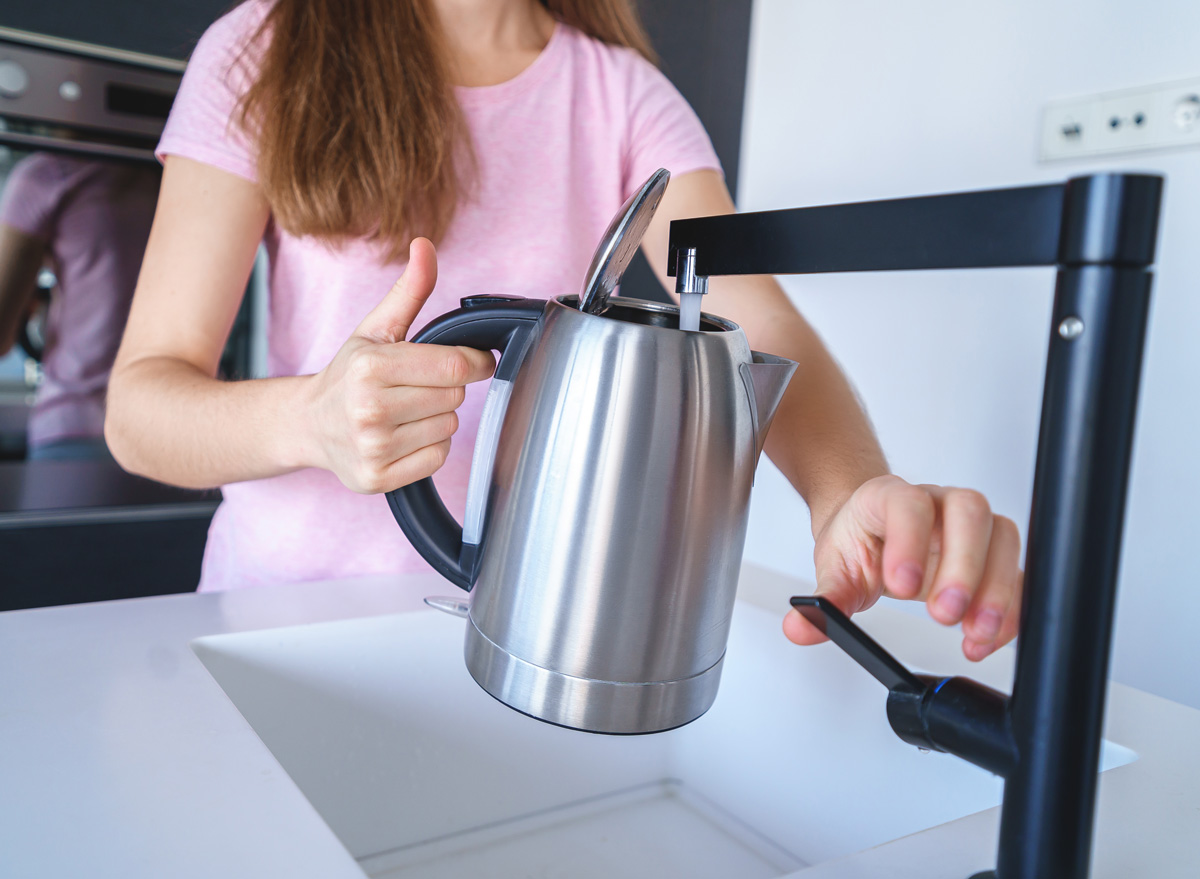
Other than water, tea is the most frequently consumed beverage worldwide. Dating back almost 50 centuries, tea has held a special place in humans’ diets for a long time, so it’s no surprise why the drink is still so popular and so prevalent now. But its longstanding place in human history isn’t the only reason why people drink tea. It’s also because the brewed beverage has some incredible health benefits.
Dozens of studies (and thousands of years of anecdotal evidence) have found that antioxidant-rich tea has numerous beneficial effects on health, including the prevention of many diseases such as cancer, diabetes, arthritis, cardiovascular disease (CVD), stroke, and obesity.
With nearly 21 percent of the adult American population considering themselves tea drinkers, we thought it would be useful to share the most common mistakes people make when brewing a batch. Making these mistakes may not completely cancel out tea’s benefits, but they’re certainly not doing anything to help this miracle drink out. These mistakes range from ruining flavor to preventing the extraction of the most beneficial compounds.
Keep these in mind the next time you put the kettle on the stove, and if you needed any more convincing to order some tea leaves, it might be worth taking a look at What Happens to Your Body If You Drink Tea Every Day.
Your water is too hot
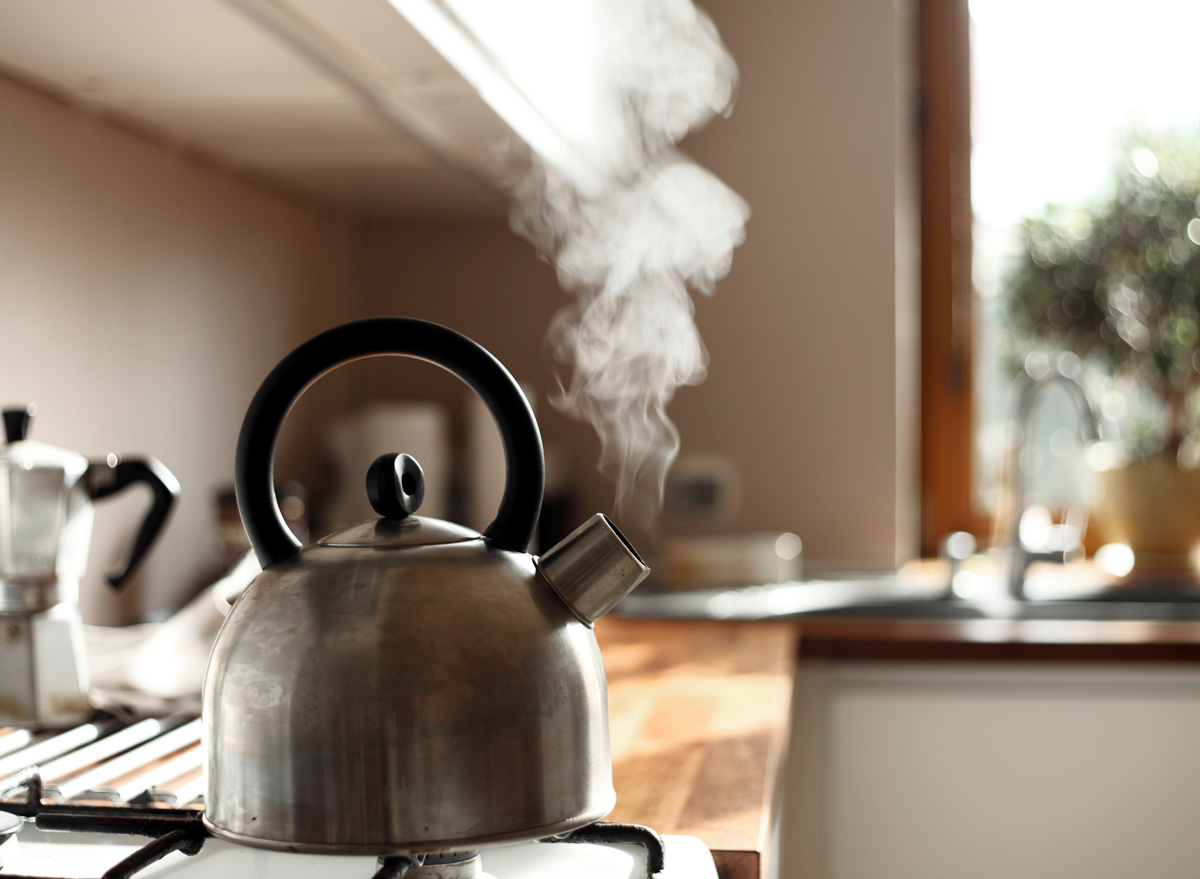
You shouldn’t be relying on that whistle of your tea kettle. If you are, that means your water has come to a boil—and it’s too hot. The heat can make those delicate tea leaves taste bitter and less sweet. Studies show that hot water can also destroy delicate, health-promoting compounds like catechins. For the perfect cup of tea, you want your water to be just under a rolling boil, you can eyeball to be around when small bubbles start to form alongside the kettle.
Now, there isn’t one temperature that works for every tea—each is different. For example, green tea should be brewed between 180 and 185 degrees Fahrenheit while the water for black tea should come to 206 degrees, according to the Art of Tea. To be this precise, it might be worth investing in a tea kettle with a thermometer.
STAY INFORMED: Sign up for our newsletter to get the latest food news delivered straight to your inbox.
You’re steeping it for too long
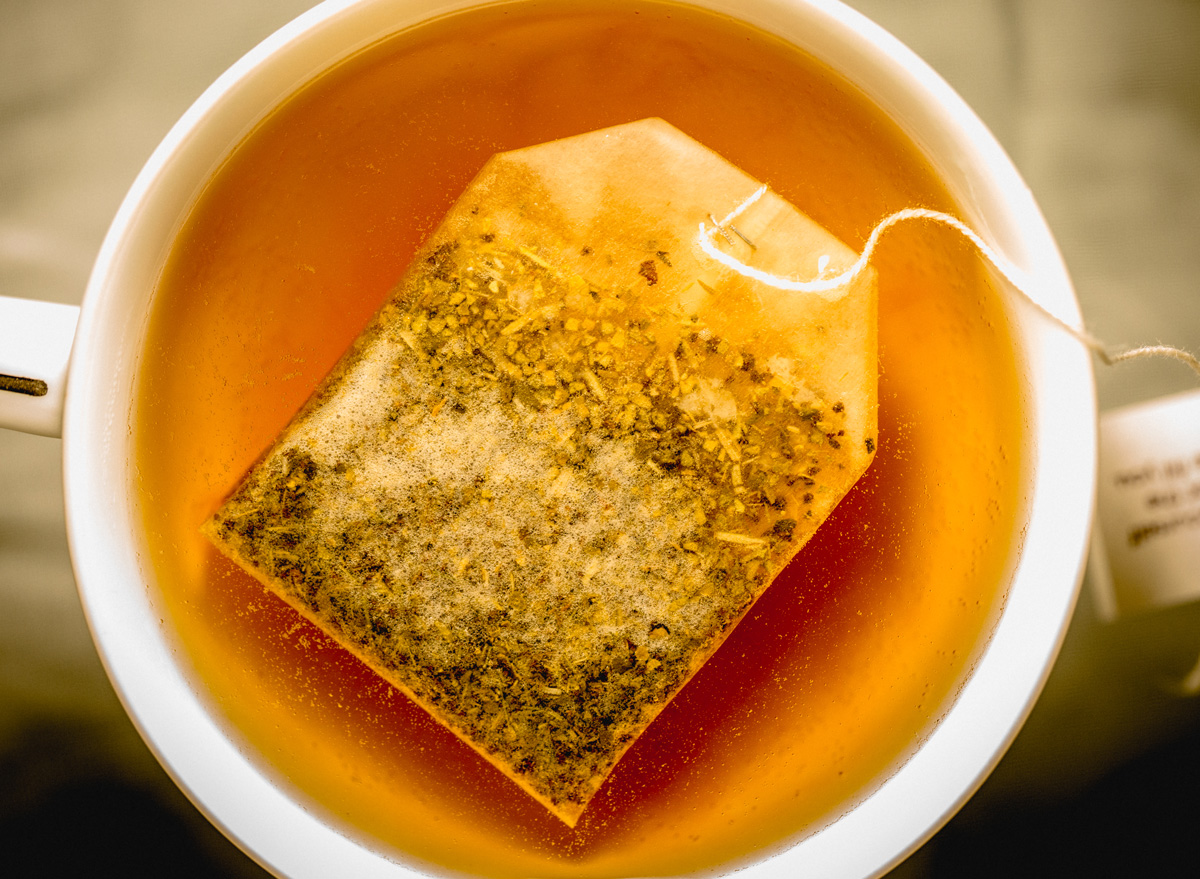
Stop setting it and forgetting it! Like temperature, the length of time you steep your tea for will vary based on the leaves. White teas should steep between one and three minutes, green for three minutes, and black for three to five minutes. Any longer and your tea will become bitter as it releases tannins. And, yes, tannins are the same compounds you find in wine. Speaking of wine, have you heard about the 10 Sneaky Reasons You’re Always Overpaying For Wine?
You’re not steeping it long enough
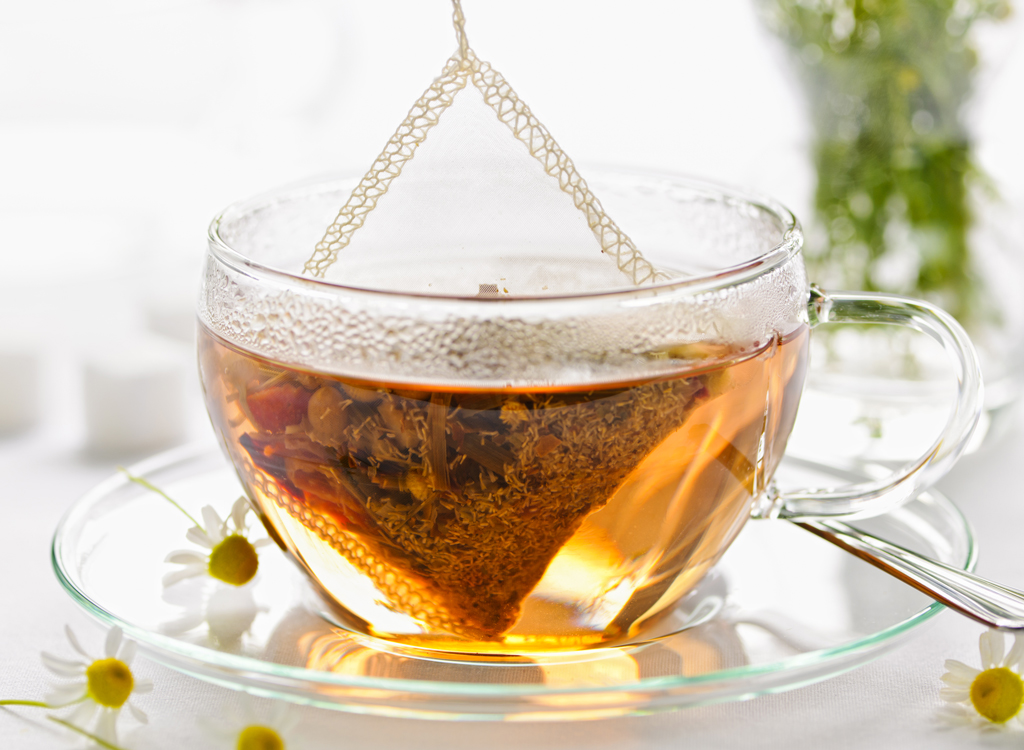
It’s like Goldilocks! Too hot and your tea becomes bitter, too cold and you won’t extract the right compounds. Depending on the chemical composition of the compounds locked in tea, they are released in specific stages in the steeping process, according to a Food Chemistry study. The first compounds that come through when you submerge those tea leaves in water are the chemicals that contribute to tea’s aroma and flavor profile. Following that is when the beneficial micronutrients—the flavanols and polyphenols—as well as the caffeine are released. Lastly, the heavier micronutrients and the bitter tannins come out. If you don’t steep your tea long enough, you may be missing out on these beneficial compounds and you may not get as much caffeine as you wanted!
You’re not using loose leaf
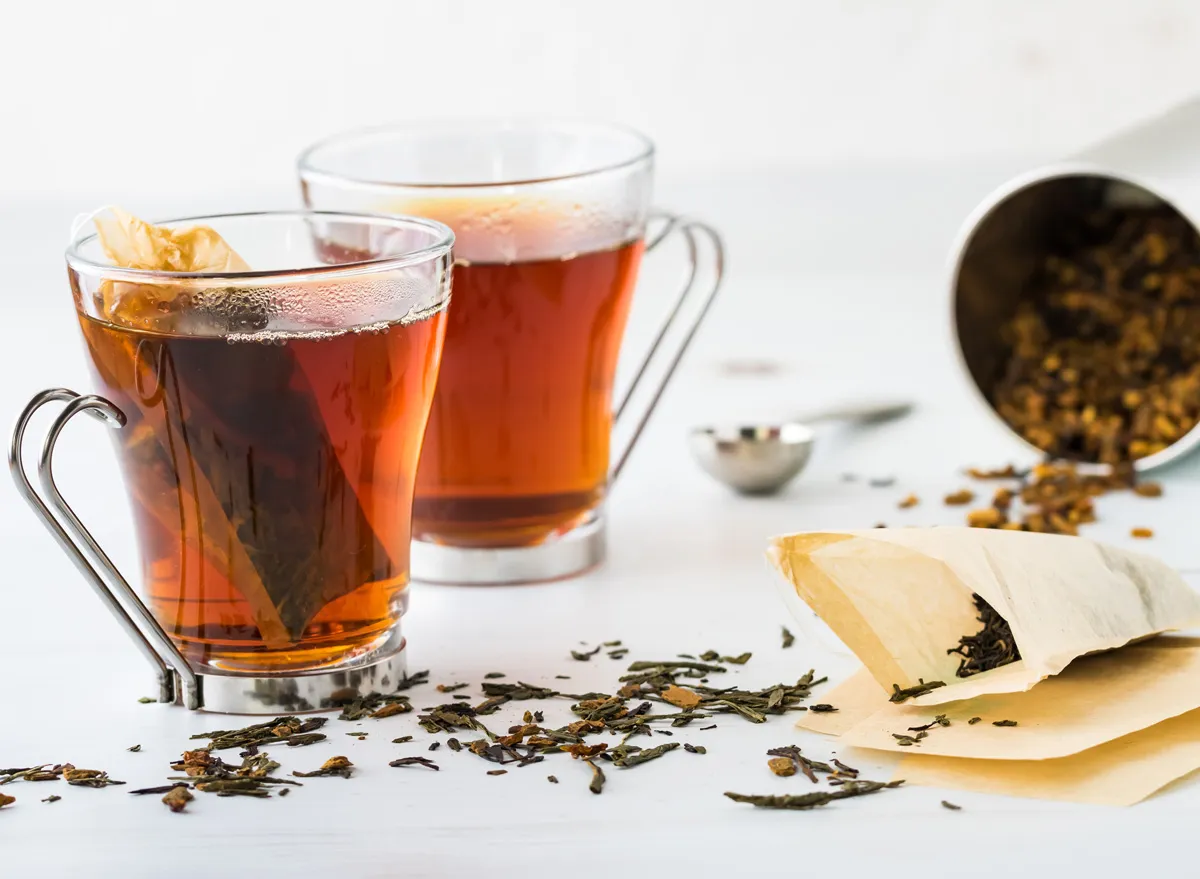
They may be convenient, but tea bags aren’t the best way to reap the benefits of tea. Your standard grocery-store tea bag contains the leftover, broken tea leaves, called the “dust and fanning“—those that didn’t qualify to be used as loose-leaf tea. These finely broken tea leaves have less essential oils and release more bitter tannins than whole leaf tea. If you don’t have the patience for loose leaf tea, no problem. Look for brews that are packaged in pyramid sachets. These are typically higher quality teas and the bag is specifically designed to allow for proper water flow. It also has a leg up on the traditional tea bags since those flat bags are often bleached paper, which can add chemicals and off-flavors to your tea.
You’re not reusing your tea bag
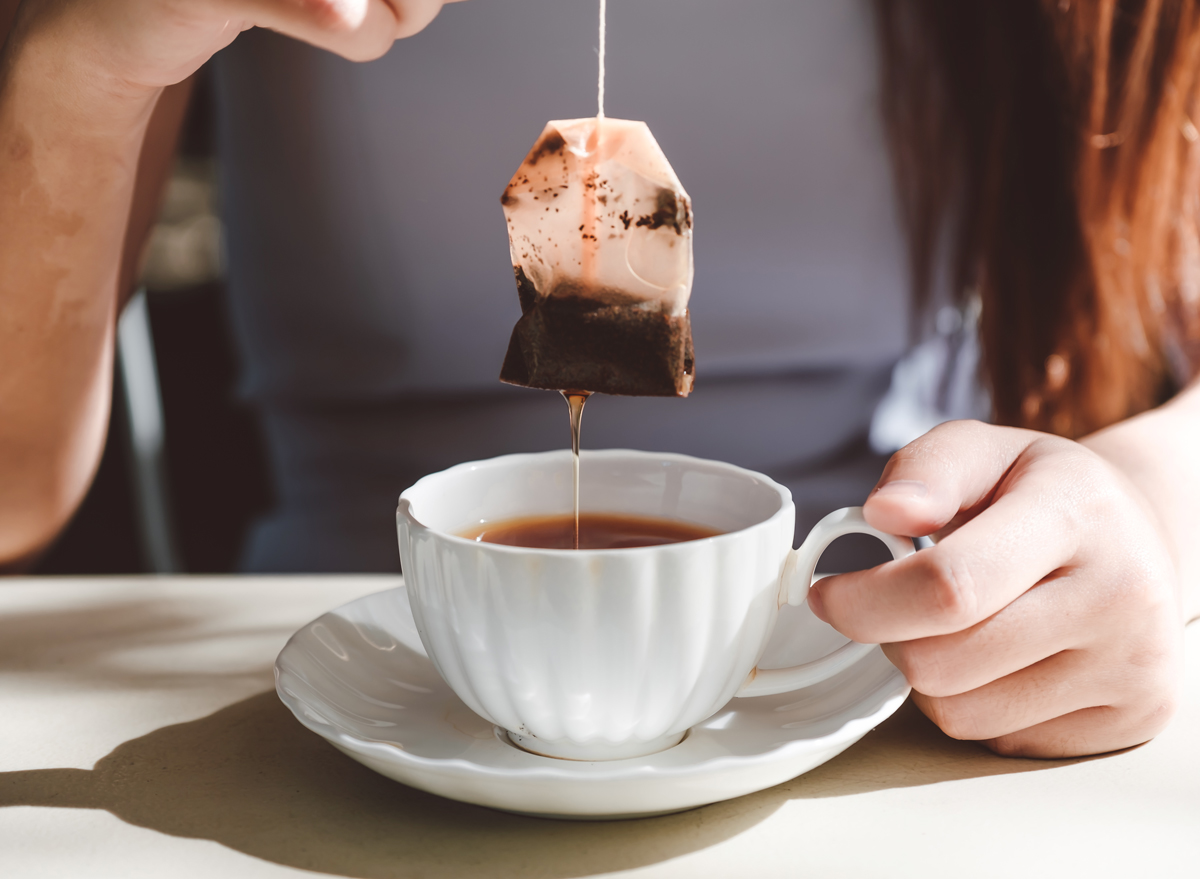
It’s time we crush the myth that you shouldn’t use the same teabag twice. With high-quality teas, you’ll actually experience unique flavors after two or three steeps—flavors that you wouldn’t taste after just one dunk. In order to do this properly there is one rule: don’t let your tea leaves stew once they have been infused. Make sure that when you remove the tea leaves from your cup, you let them drip dry. It will prevent the leaves from becoming bitter. If you do steep your tea multiple times, be aware that you’ll be extracting more caffeine every time you do so (albeit in much smaller doses than your first steep).
You’re not using high-quality water
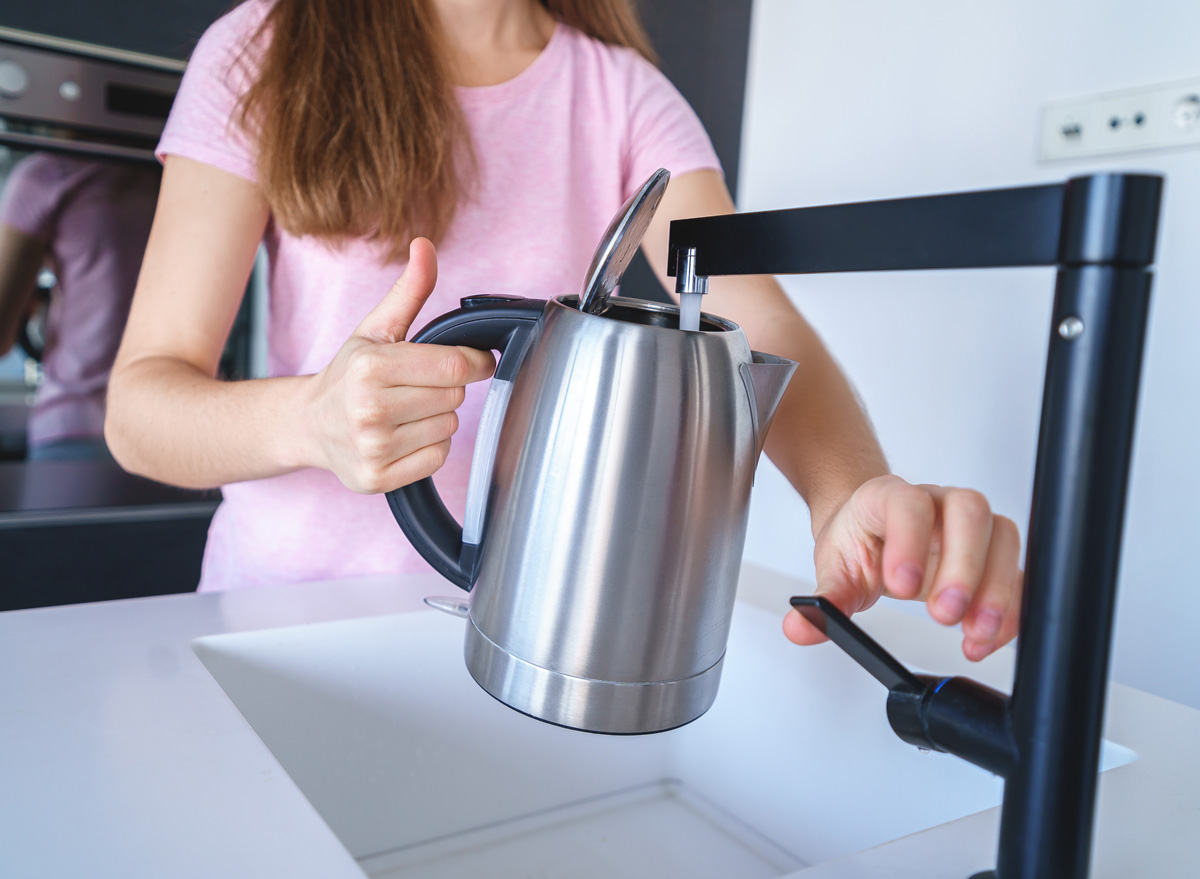
For the absolute best cup of tea, you’ll want to use filtered water. Tap water is disinfected with chlorine and may contain sediment, fluoride, and other minerals—basically, many compounds that can contribute to off-flavors in your tea. Bonus tip: If you need to use tap water, just make sure to use cool not hotTwo Leaves and a Bud water. While it’s true that using hot water will bring the water up to a boil faster, it adds additional impurities from your home’s water heater, according to .
You add too many ingredients
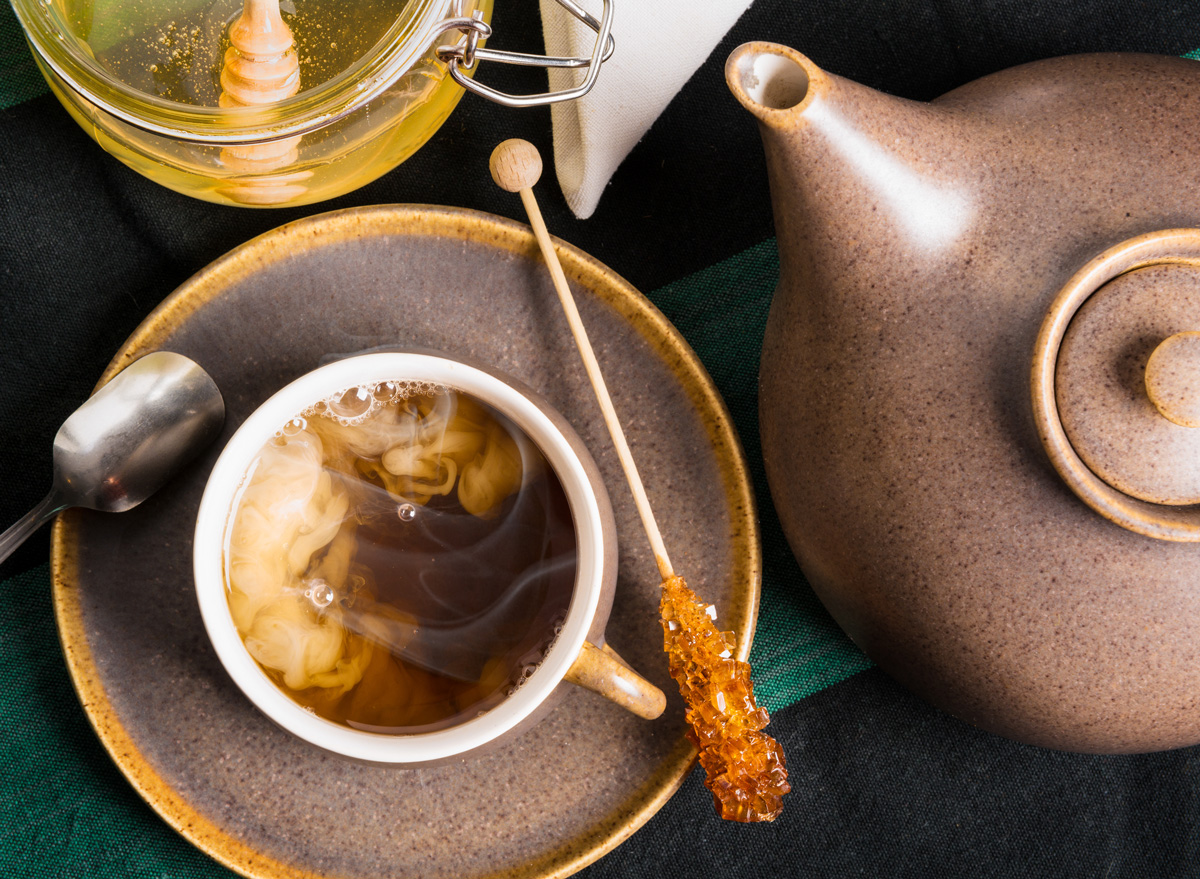
It won’t necessarily reduce the health benefits of tea; however, it will affect the full flavor of the tea and will certainly increase the number of calories in your cup. According to a study published in Public Health, 33 percent of tea consumers drink tea with caloric add-ins. The most popular add-ins for tea are sugar or sugar substitute, honey, and whole or reduced-fat milk. This same study found that doctoring up your cup can add an additional 69 calories to your plate—which can add up if you aren’t paying attention. If you need to use add-ins, opt for healthier options like low-calorie milk alternatives and use small amounts of natural sweeteners like honey.
You’re not using the right cup
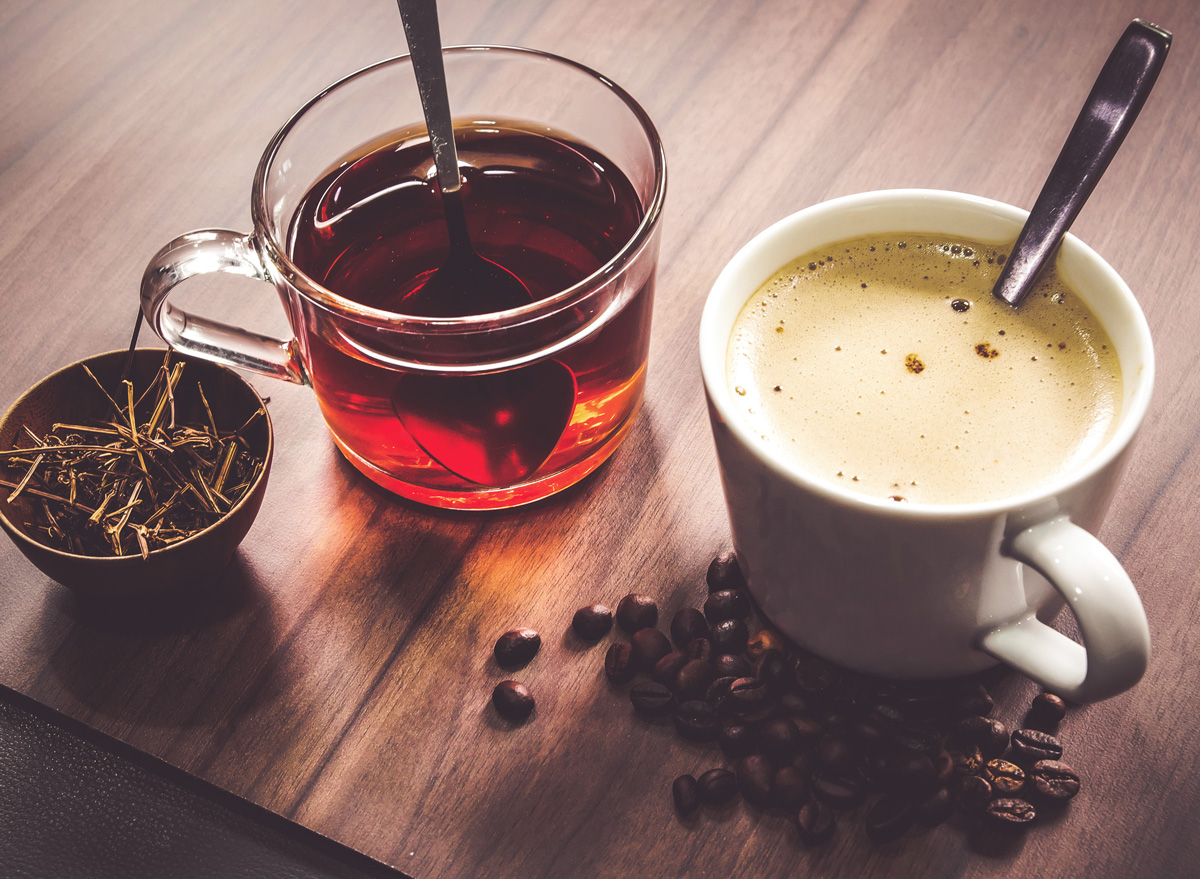
Because you steep tea at a relatively high temperature, you’ll want it to cool down before you drink it. The larger surface area of a wide-mouthed cup—as opposed to a standard small-mouthed and tall coffee cup—will allow the top of your tea to cool down enough so you can drink it. The shallowness of the cup will also limit how much tea you pour in at a time. That way, when your tea is at the right sipping temperature, the whole cup will be the right temperature throughout. If you’re looking for something to put in that cup of coffee, just make sure it’s not any of the 7 Things You Should Never Add to Your Coffee.
You’re not using a tea pot
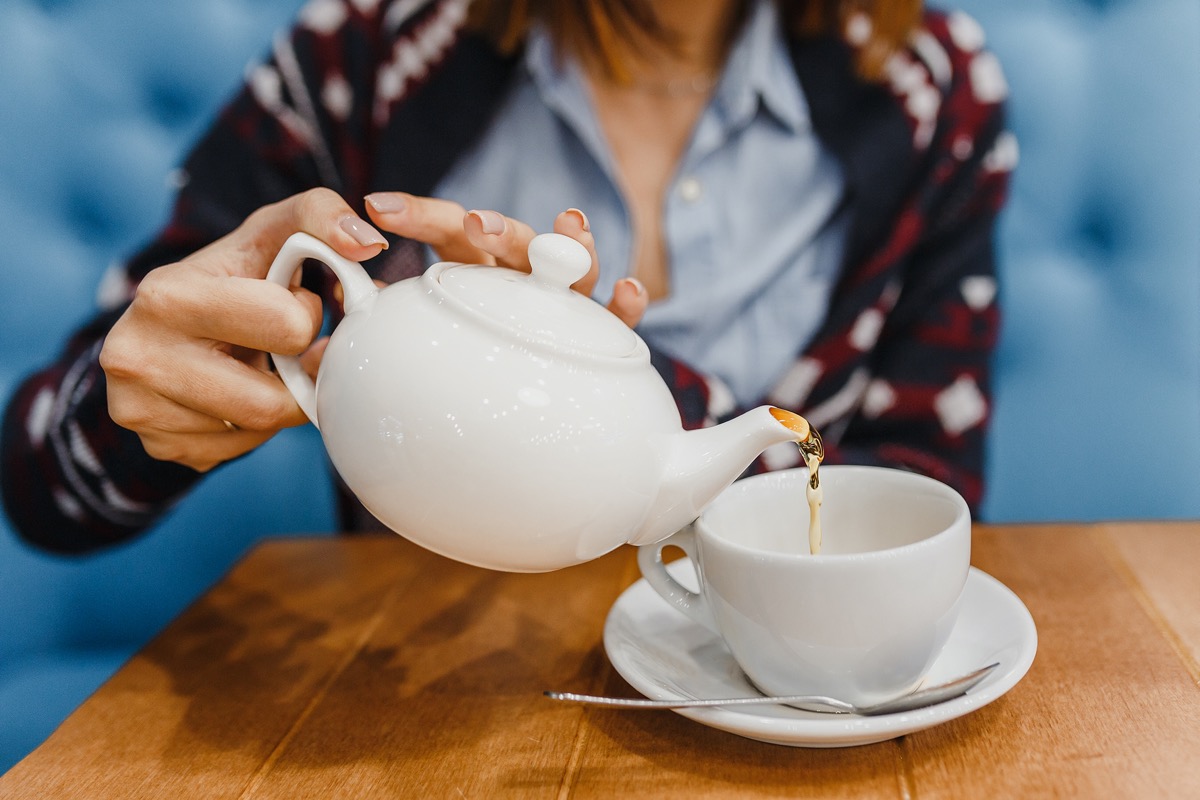
If you want cold tea, you should just drink iced tea. If you pour yourself a big cup of tea, there’s a high likelihood of that cup cooling down to a less-than-ideal temperature before you finish it. That’s where the trusty teapot comes in. Using a teapot allows your tea to stay warm for longer. By pouring a little bit of tea in your cup at a time, it will always be the right temperature when you drink it. Just make sure you’re not overdoing it on those pours. See these: 10 Signs You’re Drinking Too Much Tea.